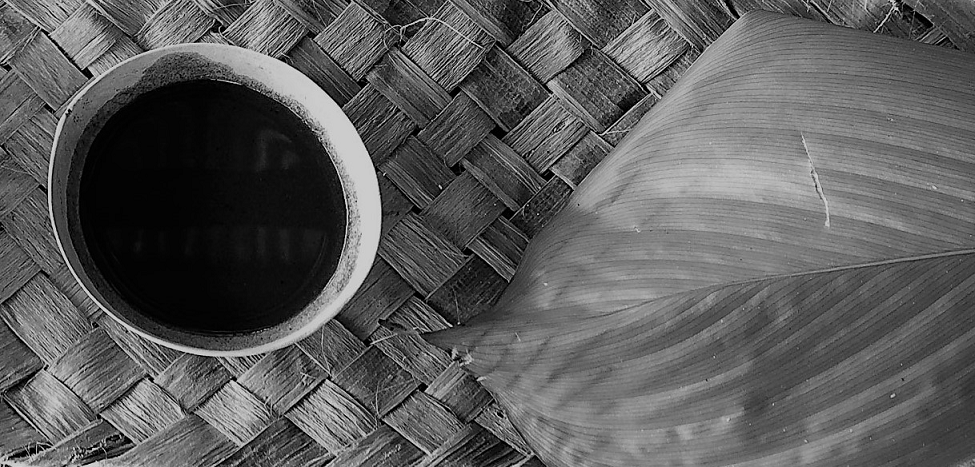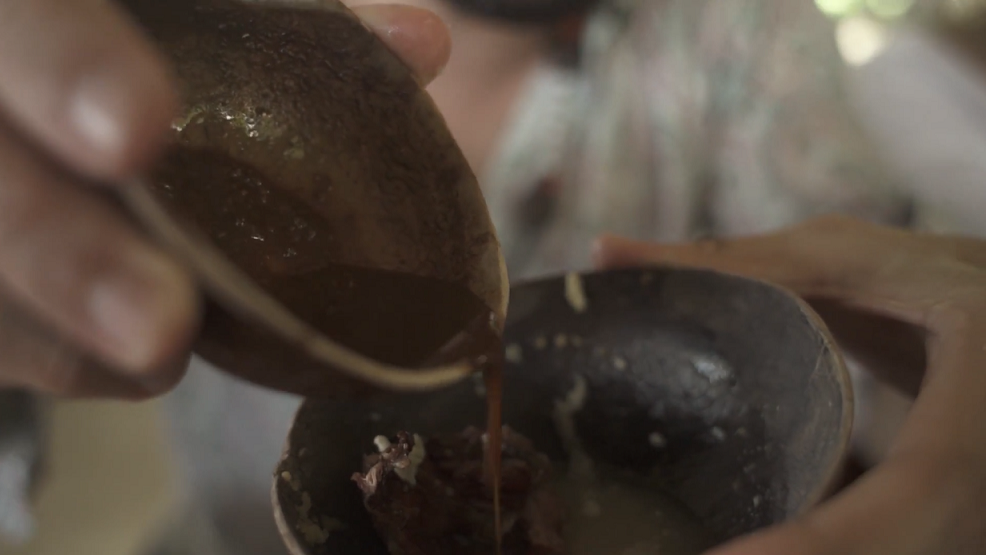By Jacob Olander
On the table of Amaz, an award-winning restaurant in Lima, with a natural-meets-urban-sophistication vibe, a small bowl of dark dipping sauce and crispy cassava-flour tortillas (casabe) is brought to the table before the meal proper begins. The sauce is a rich, slightly tangy surprise that fills the mouth with flavor. For many chefs trying it for the first time the question is often some surprised variation on “Why didn’t I know about this before”? The sauce, known as tucupi negro is, in short, delicious.
“You´re simply bowled over by how different it is. It’s unlike anything I´d tried before. The sauce is so surprising and seductive that I´d pay to see it in the hands of the best professional chefs and see what they´d be capable of doing with it,” wrote Ignacio Medina, Spanish food critic.
Pedro Miguel Schiaffino, the star chef behind Amaz (and Malabar), is shepherding this remarkable ingredient from roots deep in the rainforest to high-end food markets in an effort to economically support local communities, revitalize an ancient cultural tradition and open people’s hearts and minds to the Amazon through the unique power of food.
“I had heard about this sauce called tucupi or ají negro from other parts of the Amazon and kept searching for it here in Peru until I finally found the Bora and Huitoto women of Pucaurquillo, who maintained the tradition,” says Schiaffino. “It´s just an incredible ingredient for many of our dishes here at Amaz.”
But tucupi negro starts out as anything but delicious. In fact its roots are deadly.
Out of the rainforest
Doña Camila Garcia Tello, eases the thick roots of her manioc plant out of the ground and shakes off the loose soil. A practiced swipe of her machete and a piece of stalk is shoved into the earth to seed another harvest. Bitter manioc, or in Spanish yuca brava (“fierce manioc”) is a story of double domestication from the Amazon. Doña Camila is an abuela, a respected elder, of the Bora people of Peru, and her ancestors along with those of many other indigenous peoples started farming a wild ancestor of her yuca brava thousands of years ago, probably somewhere in the southern Amazon. Manioc, yuca or cassava as it is variously known, is one of the world’s most important staple crops. Though relatively little consumed in the United States or Europe, it a staple food source for over half a billion people around the world, especially in Africa.
What’s remarkable and unique amongst the world´s major crops is that manioc can be poisonous in its natural state. Without careful processing techniques developed by indigenous farmers to remove and neutralize the cyanide compounds, eating bitter manioc roots can be fatal. While native Amazon farmers have bred low-cyanide varieties over millennia that can be safely consumed after cooking, bitter manioc is still preferred by many indigenous communities because of its resistance to voracious tropical pests common in their rainforest gardens – and because they consider it a superior food. In addition to learning how to grow the wild ancestor of Manihot esculenta, indigenous peoples needed to learn how to tame the poisons it contained.
From toxic to tasty
Many indigenous peoples throughout the Amazon cultivate bitter manioc, and have various approaches to the alchemy of transforming poison to nourishment. The basics involve grating, soaking and mild fermentation, liberating the volatile cyanide. Tapioca starch is one byproduct, while fresh tucupi, an acidic yellow liquid sauce, is the other. This tucupi is a signature ingredient in the cuisine of Brazil’s Pará State.
Some indigenous peoples of the western Amazon, primarily in Colombia, Ecuador, Peru and Brazil go a step further and continue to cook down the resulting sauce, often adding seasonings that vary from community to community, from cook to cook – chili peppers (ají), smoked meats or fish, even rainforest ants. But even without the added ingredients, the carefully cooked, dark sauce is surprisingly flavor-rich despite the simplicity of its basic ingredients.
Tucupi negro goes by different names in different indigenous languages and regions including ommaï (Uitoto), kígai (Muinane), do-hmepa (Bora), ualako (Yucuna), neapia (Secoya) and ají negro, more broadly.
__________________________________________________________________________________________________________________________________________________________
We´re aiming to bring a limited quantity of the bottled sauce to the US in early 2018. If you´d like us to let you know when we start taking orders so that you can try tucupi negro for yourself, let us know and we´ll keep you posted.
Contact us at: accounts@canopybridge.com
___________________________________________________________________________________________________________________________________________________________
Rainforest and heritage at risk
Despite popular notions of immutable native cultures and primeval forest, the history of the Amazon is anything but static. The Bora and Huitoto of Pucaurquillo, a village on the banks of the Ampiyacu River where Schiaffino sources his sauce, are relative newcomers to Peru, enslaved and displaced from their ancestral home in Colombia at the tail end of the rubber boom a century ago. Tucupi negro and the culture of yuca brava has been a thread that connects them to their ancestral traditions; a link that has survived that complicated and violent history of exodus.
And yet, that tradition is vulnerable. The Slow Food Foundation has highlighted ají negro and notes that “Perhaps due to the long preparation process but mostly to cultural assimilation, the making of [ají negro] is uncommon among younger women. Regardless of its cultural significance and great gastronomic potential, this recipe may get lost in the span of a generation.”
Schiaffino´s work, through the not-for-profit he launched this year, Despensa Amazonica, aims to generate new value for these products and the people who craft them. Together with Canopy Bridge and Forest Trends, Schiaffino is working on taking the sauce beyond the tables of his restaurant and will be launching a bottled product for chefs, home cooks and foodies. “The women like doña Camila that have been producing tucupi negro to send to Amaz want to do more,” says Tatiana Rivadeneyra, who works with the initiative, “The small sales to the restaurant are already important in helping with household expenses and are controlled by the women, but they´d like to bring on more members and earn more.”
In the process, getting tucupi negro out to a broader audience willing to pay a premium price, can help contribute to rainforest conservation. Pucaurquillo is one of 14 indigenous villages in the Ampiyacu-Apayacu Reserve, a place that Peruvian organization, Instituto del Bien Común, describes as “one of the most biologically diverse areas on Earth.” Livelihood alternatives like tucupi negro can help offset the pressures communities face from illegal logging and hunting, as long as they are carried out in balance with traditional shifting cultivation systems that allow the rainforest to regenerate and replenish between planting cycles.
“We´ve taken a careful look at how much their farms can produce sustainably and there´s definitely room to create more income, without threatening the place that tucupi negro and yuca brava has in the diets of Bora and Huitoto families,” says Rivadeneyra, underscoring the delicate balance between making something popular and keeping it available for local consumers – what some refer to as the quinoa conundrum.
Sometimes taking a product out of the rainforest is a paradoxical way of bringing it back in to people´s diets. “The women are motivated by that fact that people outside their community are interested in this product, because they never thought that it would be something of value to people from elsewhere.”
This two-way collaboration is the driving force behind Cumari, a network of chefs, scientists and activists working on promoting Amazon foods, both to new urban markets and back in the rainforest communities where they originate. Canopy Bridge´s Marta Echavarria, one of the founders of Cumari sums it up: “We want to help show people on both sides just how rich these cultural traditions and natural ingredients are, before they are lost.”
__________________________________________________________________________________________________________________________________________________________
Canopy Bridge would like to thank the United States Agency for International Development (AIME) program as well as the Gordon and Betty Moore Foundation, who together with partner Forest Trends, have helped support our work with the women of Pucaurquillo and other Peruvian partners.
Additional links related to tucupi negro:
Amazonian Fermentation By Nicholas Gill
Featured image photo credit: Xandra Uribe



